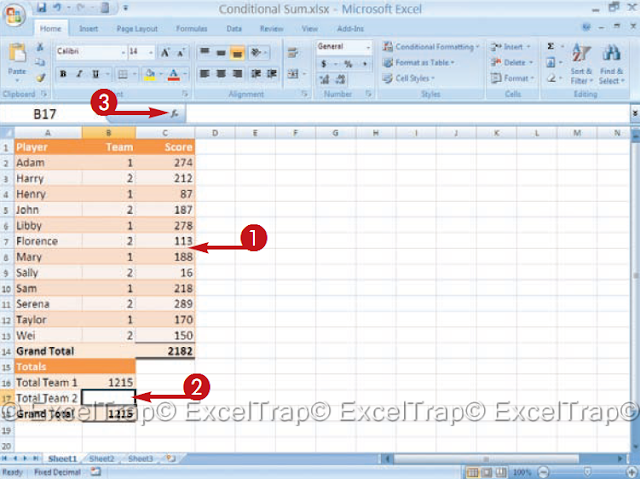MS Excel : Calculate a CONDITIONAL SUM
You can use conditional sums to identify and add
investments whose growth exceeds a certain rate. the
The SUMA function combines the SUMA and SI functions in
An easy to use function.
SUMIF () is simple, relative to a formula that uses
both SUM () and IF (). SUMIF () allows you to avoid
complicated nesting and using the Function Wizard
without making a function an argument of the
other. However, using two functions - SUM and SI -
gives you greater adaptability For instance, you can utilize
Truly to make various complex conditions.
SUMIF takes three arguments: a range of numbers,
the condition that applies to numbers and the
range to which the condition applies. Values that
They meet the condition they add up. For example,
you can create a function that evaluates a list for
determine the team on which a person is and for all
People in Team 1 can add scores. The third
argument, the range to which the condition applies,
it's optional. If you exclude it, Excel adds the range
you specify in the first argument.
1 Create a list of values to add
conditionally
Note: Each value in the list is
tested to see if it meets a
condition. If it does, it is added to
Other values that meet the condition.
2 Click on the cell in which
He wants the results to appear.
3 Click the Insert Function button.
l The Insert Function dialog box
appears.
4 Click here and select All.
5 Double-click SUMIF.
l The arguments of the function
dialog box for SUMIF
appears.
6 Enter the range or range
series name that
want to evaluate
7 Write a comparison
operator and a
condition.
8 Type the range or range
series name for
be added if the
The condition is met.
9 Click OK.
The result appears in the cell with the
formula.
Did you know
The COUNTIF function works as SUMIF. ThatIt consolidates two capacities, Tally and IF, and takes
two contentions: a series of values and the condition
by which the values are tested. Whereas SUMIF
add the values, COUNTIF returns the number of
Items that passed the test.
Did you know
You can use the Conditional Addition Wizard, an Excelcomplement The Conditional Addition Assistant has four personal explanations
Steps. The last step diverges from
SUMIF function assistant in which both the condition
and the result may appear on your worksheet. you
therefore, it can show conditions and results side by side
to compare them To learn how to install this add-on.














